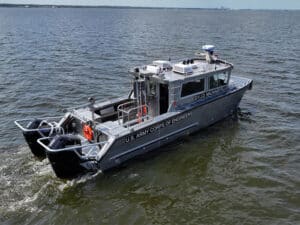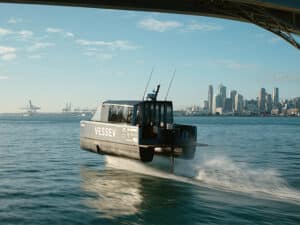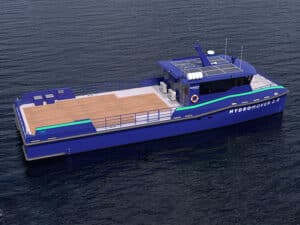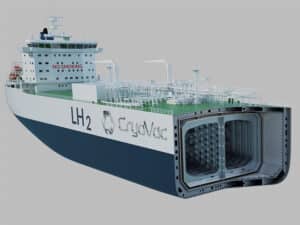
World’s largest containership starts maiden voyage
Written by Nick Blenkey NOVEMBER 8, 2012 — CMA CGM Group reports that the 16,000 TEU CMA CGM Marco Polo, the world’s largest containership, began its first voyage yesterday in Ningbo, China
NOVEMBER 8, 2012 — CMA CGM Group reports that the 16,000 TEU CMA CGM Marco Polo, the world’s largest containership, began its first voyage yesterday in Ningbo, China
Built by DSME (Daewoo Shipbuilding and Marine Engineering) in South Korea, the giant ship flies the U.K flag and is 396 m long, 54 m wide, with a draft of 16 m.
CMA CGM Marco Polo is the first of a series of three 16 000 TEU vessels, that will all be named after great explorers. The delivery of the next two vessels is expected in 2013.
Operated on the CMA CGM French Asia Line (FAL 1) route, the CMA CGM Marco Polo will call at Ningbo (7 Nov), Shanghai (9 Nov), Xiamen (11 Nov), Hong Kong (13 Nov), Chiwan (13 Nov), Yantian (15 Nov), Port Kelang (19 Nov), Tanger (6 Dec), Southampton (10 Dec), Hamburg (12 Dec), Bremerhaven (14 Dec), Rotterdam (16 Dec), Zeebrugge (17 Dec), Le Havre (19 Dec), Malta (26 Dec), Khor Al Fakkan (5 Jan), Jebel Ali (7 Jan) and Ningbo (23 Jan).
Nicolas Sartini, CMA CGM Group Senior Vice President Asia-Europe Lines, declares:
“It is with great pride that the CMA CGM Group launches this new vessel, which is the largest in the world. It shows the expertise of the Group’s teams, who are able to handle not only the very technical piloting of the ship but also its commercial operations. Our entire network of 400 agencies all around the world is active to ensure the successful launching of this ship.”
CMA CGM Marco Polo is equipped with environmentally friendly technologies that include:
- electronically controlled engine allowing a significantly reduced consumption of fuel(-3% on average) and of lube oil (-25%)
- twisted leading edge rudder improving the hydrodynamics of the vessel (optimization of the water flow), and significantly reducing energy expenditures as well as CO2 emissions.
- Pre-Swirl Stator allowing the straightening up of the water flow upstream from the propeller in order to improve its productivity. Combined with the twisted leading edge rudder, this innovation optimizes the hydrodynamics of the vessel and makes it possible to reduce by 2 to 4% the consumption of energy and atmospheric emissions.
- Exhaust Gas Bypass systemreducing the fuel consumption by 1.5% at low speeds.
- optimized hull design
- ballast water treatment system.





Leave a Reply
You must be logged in to post a comment.